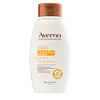What's inside
What's inside
 Benefits
Benefits

 Concerns
Concerns

 Ingredients Side-by-side
Ingredients Side-by-side

Water
Skin ConditioningVinegar
Rubus Idaeus Fruit Extract
AstringentParfum
MaskingOctyldodeceth-16
EmulsifyingPEG-60 Hydrogenated Castor Oil
EmulsifyingAlcohol
AntimicrobialGlycerin
HumectantButylene Glycol
HumectantCetrimonium Chloride
AntimicrobialCaprylyl Glycol
EmollientPolyquaternium-7
1,2-Hexanediol
Skin ConditioningDisodium EDTA
Sodium Citrate
BufferingSodium Benzoate
MaskingPentylene Glycol
Skin ConditioningEthylhexylglycerin
Skin ConditioningOctanediol
Raspberry Seed Oil/Tocopheryl Succinate Aminopropanediol Esters
Skin ConditioningLavandula Angustifolia Extract
Skin ConditioningMelaleuca Alternifolia Leaf Extract
PerfumingRosmarinus Officinalis Leaf Extract
AntimicrobialSaccharomyces Ferment Filtrate
HumectantHydrolyzed Corn Protein
Skin ConditioningHydrolyzed Soy Protein
HumectantHydrolyzed Wheat Protein
Skin ConditioningPhenoxyethanol
PreservativeWater, Vinegar, Rubus Idaeus Fruit Extract, Parfum, Octyldodeceth-16, PEG-60 Hydrogenated Castor Oil, Alcohol, Glycerin, Butylene Glycol, Cetrimonium Chloride, Caprylyl Glycol, Polyquaternium-7, 1,2-Hexanediol, Disodium EDTA, Sodium Citrate, Sodium Benzoate, Pentylene Glycol, Ethylhexylglycerin, Octanediol, Raspberry Seed Oil/Tocopheryl Succinate Aminopropanediol Esters, Lavandula Angustifolia Extract, Melaleuca Alternifolia Leaf Extract, Rosmarinus Officinalis Leaf Extract, Saccharomyces Ferment Filtrate, Hydrolyzed Corn Protein, Hydrolyzed Soy Protein, Hydrolyzed Wheat Protein, Phenoxyethanol
Colloidal Oatmeal Extract
HumectantWater
Skin ConditioningSodium C14-16 Olefin Sulfonate
CleansingCocamidopropyl Betaine
CleansingVinegar
Polyquaternium-22
PEG-7 Amodimethicone
HumectantLinoleamidopropyl Pg-Dimonium Chloride Phosphate
Polyquaternium-39
Sodium Hydrolyzed Potato Starch Dodecenylsuccinate
PEG-150 Pentaerythrityl Tetrastearate
EmulsifyingPPG-2 Hydroxyethyl Cocamide
EmulsifyingPropylene Glycol
HumectantHexylene Glycol
EmulsifyingSodium Citrate
BufferingCitric Acid
BufferingSodium Hydroxide
BufferingSodium Benzoate
MaskingParfum
MaskingColloidal Oatmeal Extract, Water, Sodium C14-16 Olefin Sulfonate, Cocamidopropyl Betaine, Vinegar, Polyquaternium-22, PEG-7 Amodimethicone, Linoleamidopropyl Pg-Dimonium Chloride Phosphate, Polyquaternium-39, Sodium Hydrolyzed Potato Starch Dodecenylsuccinate, PEG-150 Pentaerythrityl Tetrastearate, PPG-2 Hydroxyethyl Cocamide, Propylene Glycol, Hexylene Glycol, Sodium Citrate, Citric Acid, Sodium Hydroxide, Sodium Benzoate, Parfum
 Reviews
Reviews

Ingredients Explained
These ingredients are found in both products.
Ingredients higher up in an ingredient list are typically present in a larger amount.
Parfum is a catch-all term for an ingredient or more that is used to give a scent to products.
Also called "fragrance", this ingredient can be a blend of hundreds of chemicals or plant oils. This means every product with "fragrance" or "parfum" in the ingredients list is a different mixture.
For instance, Habanolide is a proprietary trade name for a specific aroma chemical. When used as a fragrance ingredient in cosmetics, most aroma chemicals fall under the broad labeling category of “FRAGRANCE” or “PARFUM” according to EU and US regulations.
The term 'parfum' or 'fragrance' is not regulated in many countries. In many cases, it is up to the brand to define this term.
For instance, many brands choose to label themselves as "fragrance-free" because they are not using synthetic fragrances. However, their products may still contain ingredients such as essential oils that are considered a fragrance by INCI standards.
One example is Calendula flower extract. Calendula is an essential oil that still imparts a scent or 'fragrance'.
Depending on the blend, the ingredients in the mixture can cause allergies and sensitivities on the skin. Some ingredients that are known EU allergens include linalool and citronellol.
Parfum can also be used to mask or cover an unpleasant scent.
The bottom line is: not all fragrances/parfum/ingredients are created equally. If you are worried about fragrances, we recommend taking a closer look at an ingredient. And of course, we always recommend speaking with a professional.
Learn more about ParfumSodium Benzoate is a preservative. It's used in both cosmetic and food products to inhibit the growth of mold and bacteria. It is typically produced synthetically.
Both the US FDA and EU Health Committee have approved the use of sodium benzoate. In the US, levels of 0.1% (of the total product) are allowed.
Sodium benzoate works as a preservative by inhibiting the growth of bacteria inside of cells. It prevents the cell from fermenting a type of sugar using an enzyme called phosphofructokinase.
It is the salt of benzoic acid. Foods containing sodium benzoate include soda, salad dressings, condiments, fruit juices, wines, and snack foods.
Studies for using ascorbic acid and sodium benzoate in cosmetics are lacking, especially in skincare routines with multiple steps.
We always recommend speaking with a professional, such as a dermatologist, if you have any concerns.
Learn more about Sodium BenzoateSodium Citrate is the sodium salts of citric acid. In skincare, it is used to alter pH levels and acts as a preservative.
Its main functions are to maintain the pH of a product and neutralize metal ions.
The acidity of our skin is maintained by our glands and skin biome; normal pH level of skin is slightly acidic (~4.75-5.5).
Being slightly acidic allows our skin to create an "acid mantle". This acid mantle is a thin barrier that protects our skin from bacteria and contaminants.
Learn more about Sodium CitrateIn cosmetics, vinegar is often used to help adjust the pH of a product. It is also a light exfoliant. The pH of your skin is important to maintain a healthy skin barrier.
Vinegar is created by the process of double-fermentation. It is an aqueous solution consisting mostly of water and acetic acid. Typically, vinegar contains anywhere from 5-8% acetic acid.
Other components include small amounts of contains small amounts of tartaric acid and citric acid. Depending on what is used to ferment the vinegar, it can have traces of flavoring as well.
Learn more about VinegarWater. It's the most common cosmetic ingredient of all. You'll usually see it at the top of ingredient lists, meaning that it makes up the largest part of the product.
So why is it so popular? Water most often acts as a solvent - this means that it helps dissolve other ingredients into the formulation.
You'll also recognize water as that liquid we all need to stay alive. If you see this, drink a glass of water. Stay hydrated!
Learn more about Water